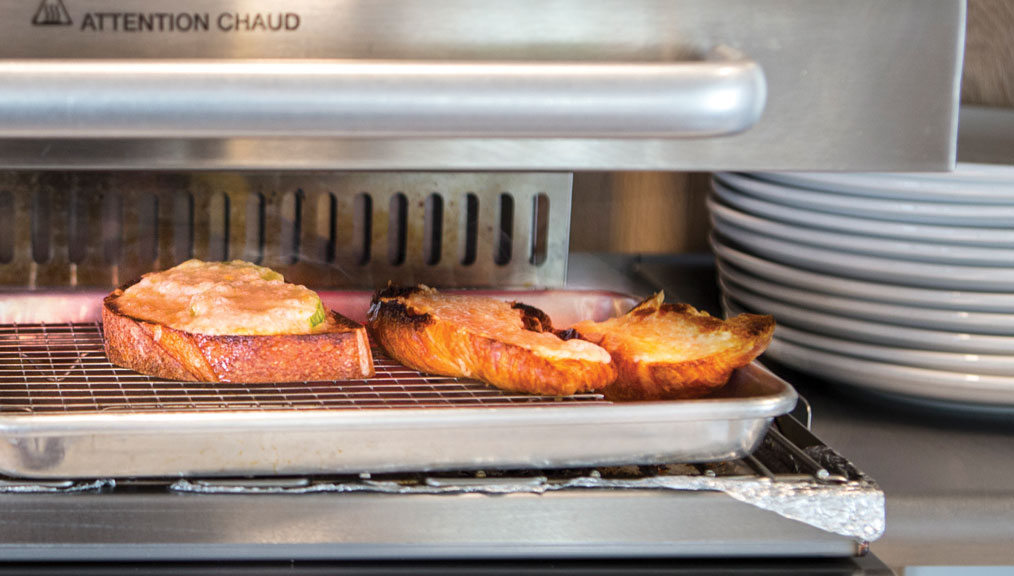(Photo: Cory Eldridge.)
[T]here’s a secret weapon available to the café owner who wants to expand hot meal offerings beyond just toast or paninis but doesn’t have the space or desire to stuff an oven into their bar. It’s called a salamander, and it’s a wondrous thing.
For all that it can do—and it can do a lot—a salamander is simply a broiler. The heating elements, which can be natural gas, propane, or electric, sit above the food on an open-air rack and heat or cook items very fast. A low-powered salamander is called a cheese melter, and that’s about all it does. Robust salamanders, though, are used by steakhouses to cook ribeyes.
At Upper Left Roasters in Portland, this salamander is their small kitchen’s workhorse. Co-owner Katherine Harris wanted to offer customers more than cold sandwiches and pastries, but a full kitchen was unfeasible. With only a set of toasters, an induction hotplate, and a salamander (none of which require a hood or fire suppression), the café serves a lovely menu featuring toasts, hot sandwiches, and more. The salamander melts cheese, warms spreads, heats maple syrup, and broils prep ingredients, like poblano peppers pulsed into a schmear. When Upper Left was being built out, Harris made sure an outlet was wired for an oven. “At this point we’ve realized we may never need the oven,” she says.
“Heating a dish changes the dish,” says Harris, and the sandwiches in the salamander here prove that. One is a house-poached tuna salad on miche bread with tomato and cheddar, and next to it is a croissant with emmantaler cheese and mustard that will be finished with a piece of smoked ham. Those sandwiches could be very nice cold, but who would choose that over warmed?
A salamander requires a 240-volt outlet to accommodate its heating elements. If counter space is limited in your café, most salamanders can be mounted on the wall. While the rack on every salamander can be moved up or down, the most versatile offer on-the-fly adjustment, which allows a cook to go from warming a tapenade one minute to scorching the cheese on a french onion soup the next. (On this salamander, the heating elements move up and down.)
If melted cheese and hot spreads have been on your menu wish list, a salamander’s the tool to make all your bubbly, crispy food dreams come true.
—Cory Eldridge is Fresh Cup‘s editor.
















